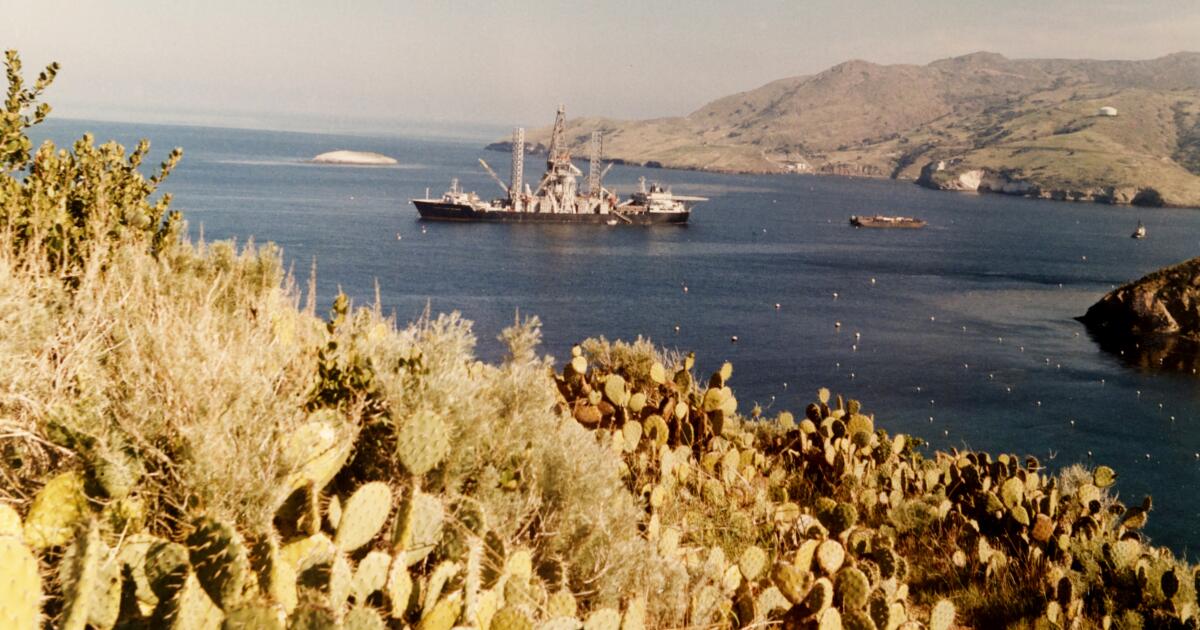
At the same time U.S. movie theaters in 1968 were showing nuclear sub captain Rock Hudson on a stealth mission to recover Russian secrets in “Ice Station Zebra,” a similarly risky and possibly more outlandish Cold War retrieval mission was on the horizon in real life, this one involving an intel-rich Soviet nuclear-armed sub that had sunk to the bottom of the Pacific only months prior. And while this undertaking didn’t involve screen stars, a notorious movie-biz giant played a leading role.
The “Argo”-meets-“Raise the Titanic” story of the expensive, six-year-long classified endeavor known as Project Azorian is briskly (maybe too briskly) recounted in Philip Carter’s documentary “Neither Confirm Nor Deny.” Named for the classically winking and obfuscating CIA response to questions about its operations, the title is part of this history, too, in that it became PR boilerplate for the agency as a direct result of the operation making its way into headlines. (The Los Angeles Times was first with some details, in 1975.)
That era wasn’t the most honorable for the spy outfit, as Carter’s framing device recounts. Outrage about the CIA’s global meddling had intensified in the wake of Watergate and an energized press, represented here by stories about investigative columnist and dogged Richard Nixon thorn Jack Anderson, and original interviews with Seymour Hersh and Rolling Stone’s Hank Philippi Ryan. Rolling Stone’s Freedom of Information requests spurred the CIA’s first-known use of the titular phrase.
But reputation aside, it’s also difficult to imagine how, in the late ‘60s, the CIA could ignore knowing where the sunken Soviet submarine K-129 lay, when the Russians had no clue. Carter skips over how our side sussed out its location — one of a few instances when interesting details are sacrificed for pace — and jumps straight to laying out the problem: how to covertly recover it from three miles below the ocean’s surface, at a time when Cold War tensions were the stuff of nightmares?
A scene from the documentary “Neither Confirm Nor Deny.”
(David Sharp Private Collection / Greenwich Entertainment)
The answer, as told in interviews with its principal architect, CIA lifer David Sharp (whose book the film is based on), was a technical collaboration with offshore-exploration company Global Marine and a secretive one with crackpot industrialist Howard Hughes, who agreed to a believable camouflage for the public: Hughes was trailblazing deep-sea mining with a massive new ship, the Glomar Explorer.
The hidden reality was that inside the Glomar was a submersible vessel with a huge claw, like something out of a young James Cameron’s wildest salvage adventure dreams. The open irony was that the cover story — which involved agents-as-employees transferring to California and living flashy West Coast lives — probably did more to spur oceanic exploration than any other venture could have.
Like any solid spy yarn, there are bouts of paranoia, technical glitches and, once the Glomar arrived at its recovery site, hair-raising threats to being discovered. The film boasts original monochromatic video footage from inside the operation, but it’s hard to fully see. When the mission principals are giving the blow-by-blow of what happened in the Pacific, you almost wish the filmmakers had budgeted for an animator for more clarity. (Elsewhere, they do use actors for transcript voice-overs, namely contextualizing Nixon White House exchanges about secrecy and Soviet relations.)
That “Neither Confirm Nor Deny” doesn’t ignore the wider controversies of the CIA is welcome, as is its acknowledgment that a free press is as necessary as a clandestine agency when it comes to gathering information for the public good. But at heart, this is a heist saga designed to enthrall in its ingenuity and ambition, one of the more presentable cases of cowboy spycraft from an us-versus-them time.
And how much did the CIA love its new version of “no comment”? Check out its very first public tweet.
‘Neither Confirm Nor Deny’
Not rated
Running time: 1 hour, 33 minutes
Playing: Now streaming on major platforms












